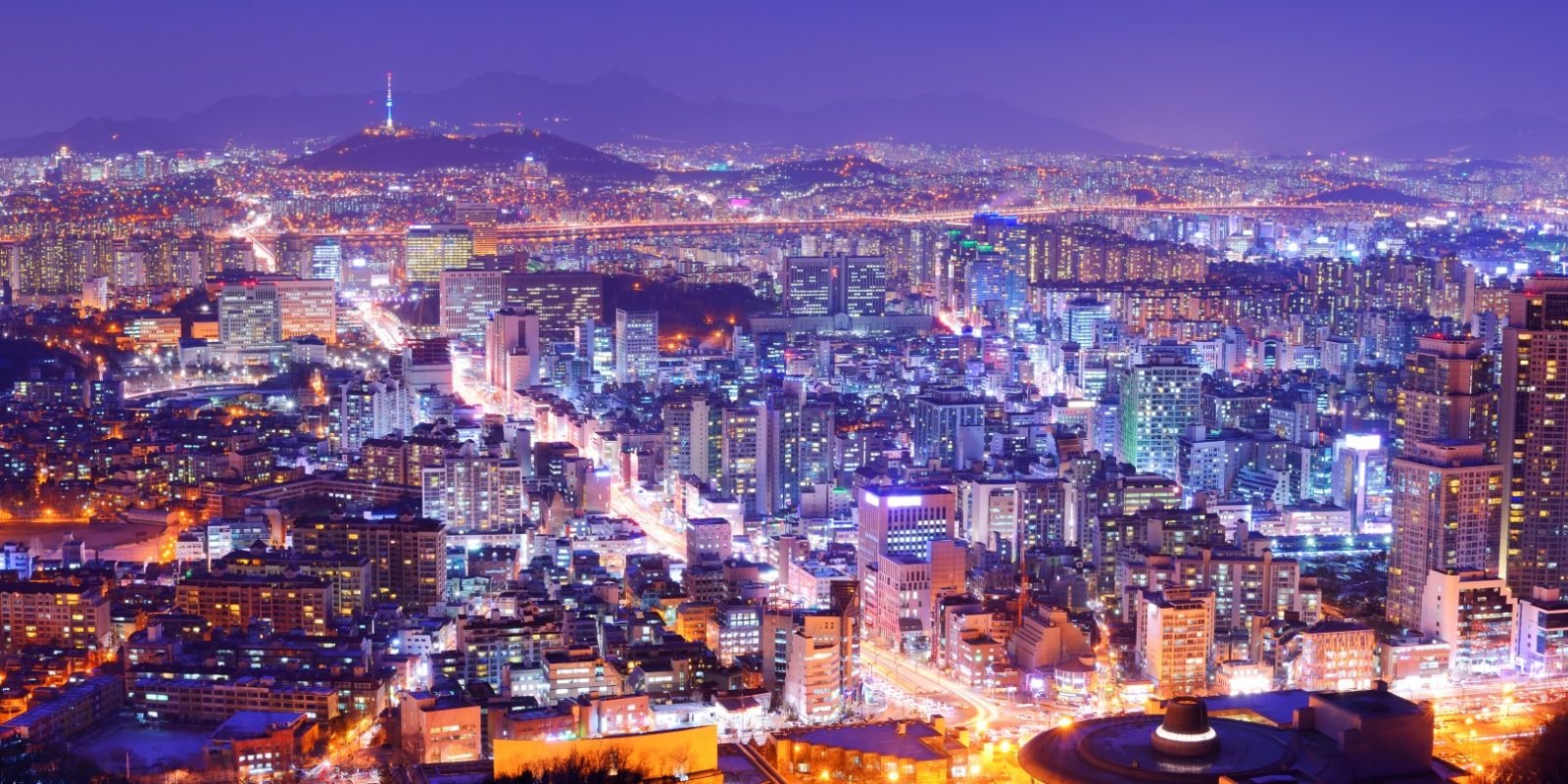South Korea is a wonderful family destination due to its unique blend of modern and traditional cultures. The country offers a wide range of attractions and activities that can be enjoyed by both adults and children, such as visiting ancient palaces and temples, exploring futuristic cities, attending cultural festivals, and enjoying delicious cuisine. Additionally, there are plenty of family-friendly parks, museums, and theme parks that make visiting South Korea with kids a fun experience.
Why bring your family to South Korea? In a gist, South Korea has:
- A safe and family-friendly environment with a low crime rate and well-developed infrastructure.
- A unique blend of modern and traditional cultures for an enriching experience.
- Ancient palaces and temples to visit, traditional foods to try, and cultural festivals to participate in.
- Family-friendly attractions, including amusement parks, water parks, museums, and zoos.
- Popular destinations such as Lotte World, Everland, and Seoul Children’s Grand Park offer entertainment and educational opportunities for children of all ages.
- A good transportation system makes it easy to travel between cities and explore different parts of the country.
- Flexibility to create an itinerary that suits the family’s interests and preferences.
Things to Do in South Korea With Kids
K-pop culture is all the rage with kids, teens, young adults, and even parents, with Korean dramas on TV and K-pop artists everywhere. But there’s more to South Korea than entertainment. Here are some things to do in South Korea with kids:
- Visit ancient palaces and temples: South Korea has many ancient palaces and temples, such as Gyeongbokgung Palace and Bulguksa Temple, that offer a glimpse into the country’s rich history and culture.
- Explore amusement parks: South Korea has a wide range of amusement parks, including Lotte World, Everland, and Seoul Children’s Grand Park, that offer entertainment and educational opportunities for children of all ages.
- Try traditional Korean foods: South Korea’s cuisine is known for its unique flavors and healthy ingredients. K-dramas have helped create a craving for Korean food worldwide. Trying traditional Korean foods, such as bulgogi, bibimbap, and kimchi, is a great way to experience the country’s culinary culture.
- Attend cultural festivals: South Korea has many cultural festivals throughout the year, such as the Seoul Lantern Festival and the Boryeong Mud Festival, which offer a fun and educational experience for the whole family.
- Visit museums: South Korea has a wide range of museums, such as the National Museum of Korea and the Seoul Children’s Museum, that offer a wealth of educational opportunities for children of all ages.
- Enjoy the outdoors: South Korea has many beautiful natural areas, such as Jeju Island and Seoraksan National Park, that offer outdoor activities like hiking and swimming.
- Watch a performance: South Korea is known for its music, dance, and theater performances. Watching a traditional Korean performance, such as a Nanta show or a Pansori singing performance, is a great way to experience the country’s cultural heritage. Or watch a K-pop concert of your favorite artist or band!
- Learn Korean language and calligraphy: South Korea has many language schools where families can take classes and learn the Korean language, and some tourist attractions offer Korean calligraphy experience as well.
- Visit animal-themed attractions: There are a variety of animal-themed attractions in South Korea, such as the Seoul Zoo and the Busan Aquarium, that offer a fun and educational experience for children.
- Participate in traditional crafts: South Korea has many traditional crafts, such as pottery and paper making, that children can participate in and learn about the country’s cultural heritage.
Read more Things to Do in South Korea With Kids
Where to Go in South Korea for Your Family Vacation
Thanks to Korean movies and TV shows, a lot of people have become familiar with various cities and places in South Korea. Here are some places to go in South Korea with kids:
- Seoul: The capital city of South Korea, Seoul is a great place to start your family vacation. Some popular family-friendly attractions in Seoul include Lotte World, Everland, Seoul Children’s Grand Park, and the National Museum of Korea. If you don’t have much time to visit, you can stick to Seoul for your Korean family vacation.
- Jeju Island: Jeju Island is a popular vacation destination for families because of its beautiful beaches, natural attractions like Seongsan Ilchulbong Peak and Manjanggul Cave, and family-friendly theme parks such as Jeju Shinhwa World.
- Busan: Remember the hit zombie movie “Train to Busan?” Well, there are no zombies here, but you’ll find plenty of fun things to see and do. Busan is South Korea’s second-largest city and a popular destination for families because of its beaches, aquarium, and amusement parks like the Busan Lotte World and the Busan Children’s Grand Park.
- Gyeongju: Gyeongju is a historic city that was once the capital of the Silla Kingdom. It has many UNESCO World Heritage sites, such as Bulguksa Temple and Seokguram Grotto, and also offers outdoor activities like hiking and biking in the nearby mountains.
- Incheon: Incheon is a city located near Seoul that is known for its beaches, Chinatown, and the Incheon Bridge Observatory, which offers panoramic views of the city.
- Nami Island: Nami Island is a small, picturesque island located near Seoul that is famous for its natural beauty, bike trails, and themed gardens. It’s a popular destination for families because of its family-friendly activities like zip-lining and rail biking.
- Andong: Andong is a small city in the southeastern part of South Korea that is known for its traditional culture and architecture. It’s a great place for families to experience traditional Korean culture through activities like mask-making and traditional dance performances.
- Suwon: Suwon is a city located south of Seoul that is known for its Hwaseong Fortress, a UNESCO World Heritage site. The fortress offers an excellent opportunity for families to learn about Korean history and culture.
- Daegu: Daegu is a city located in the southeastern part of South Korea that is known for its traditional markets and shopping areas. It’s a great place for families to experience Korean street food and shop for souvenirs.
- Daejeon: Daejeon is a city located in central South Korea that is known for its science museum, the National Science Museum, and the Expo Science Park, which offers educational opportunities for children of all ages.
Learn more about the Most Beautiful Cities in South Korea
Where to Stay in South Korea
These are some of your options for staying in South Korea with kids:
- Family-friendly hotels: South Korea has many family-friendly hotels that offer amenities like swimming pools, kid’s clubs, and organized family activities. Some popular options include the Lotte Hotel Seoul, the Shilla Seoul, and the Four Seasons Hotel Seoul.
- Traditional guesthouses: If you’re looking for a more traditional experience, many guesthouses in South Korea offer a glimpse into Korean culture and hospitality. Some popular guesthouses include Bukchon Hanok Guesthouse in Seoul and Hahoe Hanokstay in Andong.
- Airbnb: Airbnb is a great option for families who want more space and privacy than a hotel room. There are many Airbnb properties available in South Korea, including traditional hanoks, apartments, and houses.
- Theme park resorts: South Korea has several theme park resorts that offer accommodations for families. Some popular options include the Lotte Hotel Jeju and the Shinhwa Resort on Jeju Island, and the Paradise Hotel Busan near the Busan Lotte World.
- Camping and glamping: South Korea has many camping and glamping sites that offer an opportunity for families to enjoy the great outdoors. Some popular options include the Gyeongpodae Camping Site in Gangneung and the Seorak Pine Resort in Sokcho.
- Ski resorts: If you’re visiting South Korea in the winter, several ski resorts offer accommodations for families. Some popular options include the Alpensia Resort in Pyeongchang and the Yongpyong Resort in Gangwon-do.
- Beach resorts: South Korea has several beach resorts that offer accommodations for families, including the Haevichi Hotel & Resort in Jeju Island and the Shilla Stay Gwangalli in Busan.
- Traditional Korean spa resorts: For a unique and relaxing experience, families can stay at a traditional Korean spa resort, also known as a jjimjilbang. Some popular options include the Dragon Hill Spa in Seoul and the Siloam Bulgama Sauna in Busan.
What to Eat in South Korea With Kids
South Korea has a rich culinary tradition, and there are many delicious foods that kids will enjoy. Here are some popular dishes to try in South Korea with kids:
- Korean BBQ: Korean BBQ is a fun and interactive dining experience where you cook your own meat on a grill at your table. Some popular meats to try include beef, pork, and chicken.
- Bibimbap: Bibimbap is a rice bowl topped with various vegetables, meat, and a fried egg. It’s a nutritious and colorful dish that kids will love.
- Tteokbokki: Tteokbokki are chewy rice cakes in a spicy sauce, and they’re a popular snack food in South Korea. They’re often served with fish cakes and hard-boiled eggs.
- Korean fried chicken: Korean fried chicken is crispy, juicy, and delicious. It’s often served with a variety of sauces, including spicy, sweet, and soy garlic. In many K-dramas, you’ll see locals enjoying fried chicken with beer.
- Kimbap: Kimbap is a Korean version of sushi, with rice and various fillings rolled in seaweed. It’s a great on-the-go snack or light meal.
- Mandu: Mandu are Korean dumplings filled with meat and vegetables. They can be boiled, steamed, or fried and are a popular snack or meal.
- Hotteok: Hotteok are sweet pancakes filled with brown sugar, cinnamon, and chopped nuts. They’re a popular street food in South Korea and make a great dessert or snack.
- Bingsu: Bingsu is a shaved ice dessert that’s often topped with sweetened condensed milk, fruit, and other toppings. It’s a refreshing treat on a hot day.
- Japchae: Japchae is a dish made with sweet potato noodles, vegetables, and meat, all stir-fried together. It’s a nutritious and flavorful meal that kids will love.
- Patbingsu: Patbingsu is a Korean dessert made with shaved ice, sweetened red beans, and various toppings like fruit, mochi, and condensed milk. It’s a popular summer dessert that kids will enjoy.
What to Wear in South Korea
The clothing style in South Korea is quite diverse, and what you wear will depend on the season, your activities, and your personal preferences. Here are some general tips on what to wear in South Korea:
- Dress for the season: South Korea has four distinct seasons, with hot and humid summers and cold winters. Make sure to check the weather forecast and dress accordingly.
- Dress modestly: Although young Koreans are trendy, South Koreans generally dress modestly, so avoid wearing revealing clothing like shorts or tank tops in more conservative areas.
- Comfortable shoes: South Korea is a very walkable country, so bring comfortable shoes that you can wear all day.
- Layers: The weather can change quickly in South Korea, so it’s a good idea to bring layers that you can easily add or remove.
- Traditional clothing: If you’re interested in trying traditional Korean clothing, like a hanbok, there are many places where you can rent them for a day.
- Business attire: If you’re visiting South Korea for business or attending a formal event, dress in business attire, which is typically a suit and tie for men and a dress or skirt suit for women.
- Ski wear: If you’re visiting South Korea in the winter and planning to go skiing, make sure to bring appropriate ski wear like jackets, pants, gloves, and hats.
- Sun protection: South Korea can get very sunny, so make sure to bring sunglasses, a hat, and sunscreen to protect your skin.
- Swimwear: If you’re planning to visit the beaches or waterparks, make sure to pack swimwear and cover-ups.
- Comfortable and casual clothing: Overall, South Koreans tend to dress casually and comfortably, so bring clothes that you feel comfortable and confident in.
When to Go to South Korea
The best times to visit South Korea with kids depends on your preferences and what you want to do. Here’s a breakdown of the seasons and what to expect:
- Spring (March to May): Spring is a beautiful time to visit South Korea when the cherry blossoms are in full bloom. The weather is mild and pleasant, and there are many outdoor festivals and events.
- Summer (June to August): Summer is the peak season for tourism in South Korea, with hot and humid weather. It’s a great time to enjoy the beaches and waterparks but be prepared for crowds and higher prices.
- Fall (September to November): Fall is a popular time to visit South Korea when the leaves change color, and the weather is mild and pleasant. It’s a great time for outdoor activities like hiking and cycling.
- Winter (December to February): Winter in South Korea is cold and dry, with occasional snowfall. It’s a great time for skiing and winter sports, but prepare for colder temperatures and shorter days.
Overall, the shoulder seasons of spring and fall are great times to visit South Korea, with mild weather and fewer crowds. However, each season has its own unique charms, and it’s worth considering what activities and experiences you’re interested in before deciding when to go.
Read our guide on Autumn in South Korea
How Long to Stay in South Korea
The length of your stay in South Korea with kids depends on your interests and what you want to do. Here are some factors to consider when planning your trip:
- Destinations: South Korea has many different destinations to explore, including cities, historical sites, beaches, mountains, and national parks. The length of your stay will depend on how many places you want to visit and how much time you want to spend in each location.
- Activities: South Korea offers a wide range of activities, including cultural experiences, outdoor adventures, shopping, and nightlife. The length of your stay will depend on how many activities you want to do and how much time you want to spend on each one.
- Budget: The cost of travel in South Korea can vary widely depending on your accommodation, transportation, and activities. The length of your stay will depend on your budget and how much you can afford to spend.
- Time constraints: If you have limited time for your trip, you may need to prioritize the destinations and activities you want to do and plan your itinerary accordingly.
As a general guideline, a week-long trip to South Korea is a good starting point for exploring some of the country’s highlights, but to truly experience everything the country has to offer, you may want to consider staying for two weeks or more.
1-Week South Korea Itinerary With Family
Here’s a sample 1-week itinerary for a family trip to South Korea:
Day 1: Arrive in Seoul and check into your accommodation. Spend the afternoon exploring the vibrant neighborhood of Myeong-dong, where you can enjoy street food, shopping, and entertainment.
Day 2: Start the day with a visit to Gyeongbokgung Palace, the largest of the five grand palaces built during the Joseon Dynasty. In the afternoon, head to Namsan Tower for panoramic views of the city.
Day 3: Take a day trip to the nearby city of Suwon to visit the impressive Hwaseong Fortress, a UNESCO World Heritage Site. You can also explore the traditional Korean village of Hahoe, known for its well-preserved hanok houses.
Day 4: Spend the day at Everland, South Korea’s largest theme park, which offers rides, shows, and attractions for all ages.
Day 5: Travel to the coastal city of Busan and visit the famous Haedong Yonggungsa Temple, located on a cliff overlooking the sea. In the afternoon, explore the bustling streets and colorful markets of Busan’s Gamcheon Cultural Village.
Day 6: Visit the picturesque island of Jeju, known for its natural beauty and outdoor activities. Take a hike up Hallasan, the highest mountain in South Korea, or explore the stunning Jeju Olle Trail.
Day 7: Return to Seoul and spend your last day exploring the trendy neighborhood of Hongdae, known for its street art, live music, and nightlife. You can also visit the nearby Bukchon Hanok Village to see traditional Korean houses and experience the country’s rich cultural heritage.
Of course, this itinerary is just a suggestion, and you can adjust it to fit your interests and schedule. South Korea has many more destinations and activities to explore, and you can easily spend much more time in the country.
Check out more itineraries:
How to Get Around South Korea
South Korea has an extensive and efficient transportation system that makes it easy to get around the country. Here are some options for getting around South Korea:
- Subway: South Korea has an extensive subway system that connects major cities and destinations. The subway is fast, affordable, and easy to navigate, with signs and announcements in both Korean and English.
- Bus: Buses are another convenient and affordable way to get around South Korea, especially for traveling between cities and regions. There are different types of buses, including express buses, intercity buses, and local buses, and fares vary depending on the distance and route.
- Train: South Korea has a modern and efficient train system, with high-speed trains (KTX) connecting major cities and destinations. Trains are fast, comfortable, and often offer scenic views of the countryside.
- Taxi: Taxis are widely available in South Korea, and they can be a convenient option for short trips or when traveling with heavy luggage. Taxis are metered, and fares vary depending on the distance and time of day.
- Car rental: Renting a car is also an option for getting around South Korea, especially for exploring rural areas and national parks. However, traffic can be congested in urban areas, and parking can be expensive.
How Much to Travel to South Korea
The cost of traveling to South Korea can vary depending on several factors, such as the duration of your trip, your itinerary, your travel style, and the time of year you visit. Here are some rough estimates of how much you can expect to spend on a trip to South Korea:
- Flights: The cost of flights to South Korea can vary depending on your departure location, the time of year, and how far in advance you book. A round-trip flight from the US or Europe can cost anywhere from $500 to $1,500, depending on the season and airline.
- Accommodation: The cost of accommodation in South Korea can vary depending on your location and preferences. Budget options such as hostels or guesthouses can cost around $15 to $30 per night, while mid-range hotels or Airbnb apartments can cost around $50 to $100 per night.
- Food and drink: South Korea is known for its delicious and affordable cuisine, with street food and local restaurants offering a wide range of options. You can expect to spend around $10 to $20 per meal, depending on the type of restaurant and the dishes you order.
- Transportation: As mentioned earlier, South Korea has an efficient and affordable transportation system. You can expect to spend around $2 to $5 for a subway or bus ride, while taxis can cost around $10 to $20 for short trips.
Overall, a 7-day trip to South Korea can cost around $1,000 to $2,000 per person, depending on your travel style and preferences. However, you can always adjust your itinerary and budget to fit your needs and make the most of your trip.




